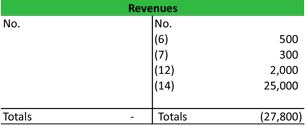
Users can add customer information, choose payment methods, add service details, and send invoices via WhatsApp or a link after saving them. This makes it the best accounting software google adwords fundamentals april 2018 flashcards we’ve researched and helped it to edge out Xero in this round. If you upgrade to at least the Essentials plan from QuickBooks, you can enter employee time by client or project and automatically add that time to invoices.
However, QuickBooks offers a more seamless experience for two big reasons. First, QuickBooks has phone support while Xero does not, so QuickBooks users can solve their problems that much faster. Second, QuickBooks offers some features that Xero doesn’t have, like document scanning. That said, Xero has a lower price point, starting at $13 per month, compared to QuickBooks’ $30 per month starting cost, and Xero offers more integrations than QuickBooks as well.
What is the difference between Xero and QuickBooks?
Yes, with Xero’s reporting and analytics features you can easily prepare and submit returns. We’ve chosen Gusto because it’s regarded as one of the best payroll solutions for small businesses using Xero in the US. You can easily calculate pay and deductions with Gusto, saving you the difficult sums. You can get your bank data into Xero from over 21,000 financial institutions globally. Plus, Xero staffers can call people back to discuss their cases over the phone, giving you that phone support you need, albeit in a roundabout way. Here’s our comparison of the core features provided by Xero and QuickBooks.

It also lets users keep a mileage log according to the IRS’s requirements. Companies that deal with multiple currencies and need to add employee time in the invoice. While both are very similar, these two products have exclusive benefits that set them apart. This guide will explore the key differences and declare our respective winners in each category. The vendors that appear on this list were chosen by subject matter experts on the basis of product quality, wide usage and availability, and positive reputation.
QuickBooks Online takes the advantage when it comes to invoicing, retained earnings on the balance sheet offering six customizable invoice templates (compared to just one offered by Xero). It also offers mileage tracking, tax support, and (for a fee) bookkeeping services, which you won’t find with Xero. While Xero’s entry-level plan seems like the better deal when compared to QuickBooks, limitations on invoices and bills make it suitable for very small businesses or freelancers.
Start using Xero for free
When looking for the best invoicing software besides Xero and QuickBooks, the best options will vary based on the business size. Freelancers may find Invoice2go and Bonsai to have user-friendly features, while Zoho Invoice and FreshBooks offer a comprehensive feature set suitable for small to medium-sized businesses. QuickBooks supports mileage tracking with its mobile app, which enables multi step income statement format examples automatic GPS tracking from mobile phone locations. Users can also add trips manually and categorize trips as businesses for tax deductions. QuickBooks allows users to include project details to calculate profitability.
We consider both QuickBooks and Xero to be among the best invoicing software for small business., with both services earning a 5/5 point score overall in our research’s bookkeeping category. QuickBooks has a wide network of banking partners, making it easy to securely import your bank feeds from a variety of banks and credit card companies. This seamless integration saves time, ensures accuracy, and eliminates manual errors. QuickBooks also accurately calculates, files, and pays payroll taxes with tax penalty protection. It also syncs with the QuickBooks Workforce app to track time for payroll. QuickBooks is not designed for proposal writing, but users can turn estimates into proposals by attaching files or adding messages.
Why small businesses love Xero
It automates the bookkeeping process by sorting business expenses into the right categories and setting up rules to categorize recurring transactions. It allows users to create custom tags to track income and expenses. Xero offers a built-in invoicing feature where users can create invoices and customize them using the company logo, custom message, and added fields. The invoices contain a Pay Now button for one-click payment using their preferred payment mode, including credit card, debit card, and direct debit. Depending on several factors, including the size of your business and the type of business you run, either QuickBooks or Xero will be your best choice.
- Xero’s time-tracking feature is included in its project management tool.
- With both programs, advanced features like time tracking and inventory management are available on select plans.
- You’ll rarely be asking yourself how to use QuickBooks Online as they offer plenty of guidance throughout the application; users can click on the question mark anytime they need assistance.
Xero’s Early plan gives you 5 bills and 20 invoices, but it only offers unlimited invoices and bills starting in its second product tier. On the other hand, Xero may be the better choice for your business. Xero is strong accounting software that has everything you need to track the financials of your business.
Bill.com enhances financial efficiency for small and midsized businesses by facilitating invoice sending, bill payments, and expense management. Melio is ideal for nonprofits, contractors, freelancers, and SMBs, offering robust management of business payments for clients. Xero is not an alternative to project management software, but it has some useful project management features for companies involved in various projects. It offers tools for time tracking, project planning, budgeting, expense monitoring, quoting, and invoicing. QuickBooks is an online accounting software that helps users track receipts, bank transactions, and income. It is popular among small to medium-sized businesses and offers cloud-based and on-premises applications.